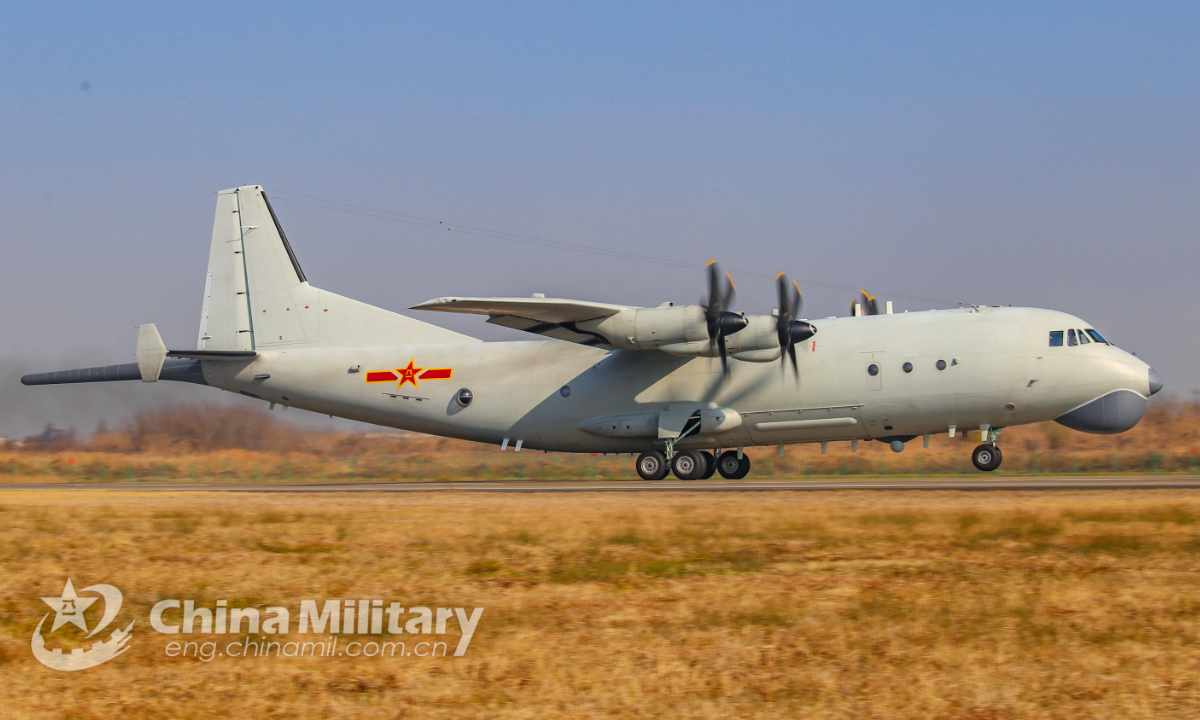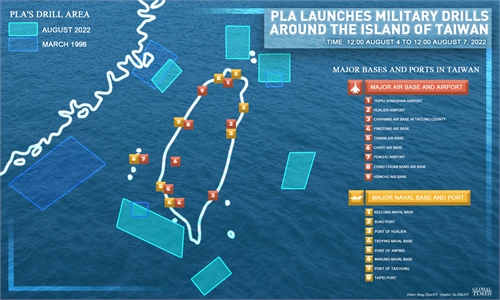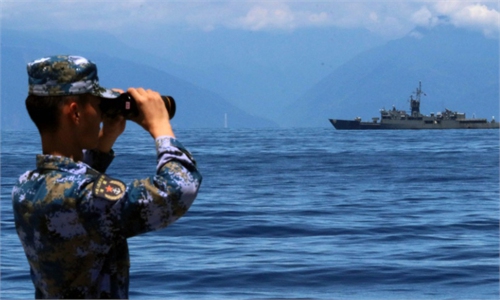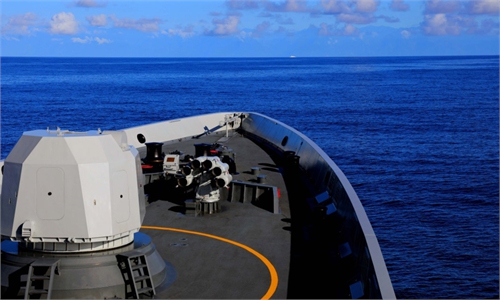
A KJ-500 airborne early warning (AEW) aircraft attached to a naval aviation division under the PLA Eastern Theater Command takes off for a patrol flight on January 2, 2022. (eng.chinamil.com.cn/Photo by Zhang Dingyi)
Falcon Strike 2022, the fifth edition of the China-Thailand annual air force joint drills, kicked off in Thailand's Udon Thani based Wing 23 of the Royal Thai Air Force (RTAF) on Sunday. Without pointing to a third party, the routine military exchange between two sides this year is expected to see more sophisticated training subjects and to show further deepened cooperation and enhanced mutual trust, observers said.
The two militaries held an opening ceremony for Falcon Strike 2022 on Sunday.
Chen Jun, commander in chief of the Chinese side, said at the opening event that the exercises, with their deepened and expanded scopes, will certainly boost the skills and capabilities of the two sides and continue to write a new chapter of friendship between the air forces of China and Thailand.
An official from the Thai Air Force said that Thailand and China have a long history of friendship and the drills will safeguard and deepen the ties between the two air forces, boost their capabilities of coordination and cooperation, and strengthen defense capabilities for regional security.
According to Thai local media, the Chinese People's Liberation Army will deploy six J-10 C/S fighter jets, a JH-7AI fighter-bomber and a KJ-500 airborne early warning and control aircraft. RTAF will deploy five Gripen aircraft, three Alphajet attack aircraft and a SAAB 340 AEW early warning and control aircraft.
As Thailand is the second largest economy among the Southeast Asian countries, its joint military practice with China, on top of the robust economic and political exchanges between the two, would be helpful to the region's peace and stability, Gu Xiaosong, dean of the ASEAN Research Institute of Hainan Tropical Ocean University, told the Global Times on Sunday.
Amid the increasing tensions caused by a series of US provocative moves in the Asia-Pacific region, Thailand, which is widely considered an important US ally, opted to stage this joint practice with China, which also shows the country's stance of not taking sides between the rival powers, which is in line with the region's interests and ASEAN members' common ground on the matter, Gu analyzed.
China and Thailand launched these joint exercises with fighter jets in 2015 with the last being held in 2019, also in Udon Thani. The 2020 and 2021 editions of the drills were put on hold due to the COVID-19 pandemic.
China's Ministry of National Defense said in a press release on Friday that the main exercise subjects for this year include air support, ground assault, and force operation. The Chinese Air Force will send fighters, destroyers and early warning aircraft.
Chaiyasit Thantayakul, a defense expert from Thailand, told local media that this drill will enable RTAF to examine the role of China's airborne early warning and control aircraft system and its performance in searching for targets at long distances. These exercises will also help the PLA understand the performance of Western weaponry and training methods as Thailand mainly purchases weapons and adopts training from the West.
Song Zhongping, a military expert and TV commentator, stressed that the routine joint exercises are mainly designed to safeguard regional peace and stability, which touches on both conventional and unconventional security domains such as counter-terrorism and anti-piracy strikes as well as providing humanitarian aid. They do not target any specific third party, Song said.
The expert noted that it would be a very valuable event for both militaries, as the two have deployed complete air force combat systems on a relatively large scale.
It is worth noting that China deployed the JH-7AI fighter-bomber for the first time in the practice. According to Song, the aircraft is one of the main force models of the PLA naval and air force, which is tasked with carrying out strikes on ground targets. Together with J-10 fighter jets, it could conduct tasks including attaining air domination and ground assaults.
Some US and Western media hyped the China-Thailand drills by linking it to the ongoing US-led live-fire drills in Indonesia.
According to France 24, more than 5,000 personnel from the US, Indonesia, Australia, Japan and Singapore are participating in this year's Super Garuda Shield exercises, and the UK, Canada, France, India, Malaysia, South Korea, New Zealand, Papua New Guinea and East Timor also sent observers.
The US Indo-Pacific commander, Admiral John C. Aquilino, was quoted in the report as saying that the 14 nations involved in the training are signaling their stronger ties as China grows "increasingly assertive in claiming virtually the entire South China Sea and holds exercises threatening self-ruled Taiwan."
Refuting such remarks, Gu pointed out that the US-led drills in Indonesia are yet another of Washington's obvious attempts to push its "Indo-Pacific" strategy to contain China. However, countries like Indonesia and Singapore have no intention of taking sides but want to show a balanced policy in participating in the event.
Gu noted that if the US wanted to offset the PLA's week-long military drills surrounding the island of Taiwan by staging its own exercises in Indonesia and creating an anti-China camp with countries outside the region such as Japan and Australia, the China-Thailand exercises proved that its attempts have failed and such drills are also expected to send deterrence to Taiwan secessionist forces through strong air force capabilities.





